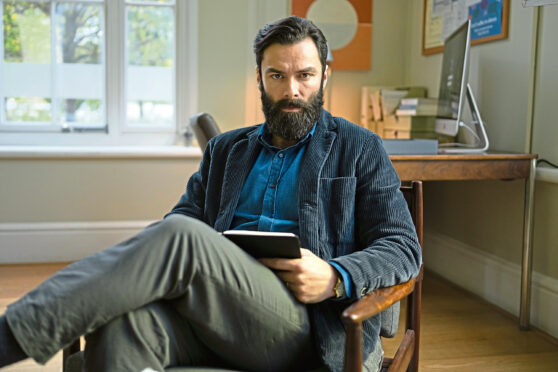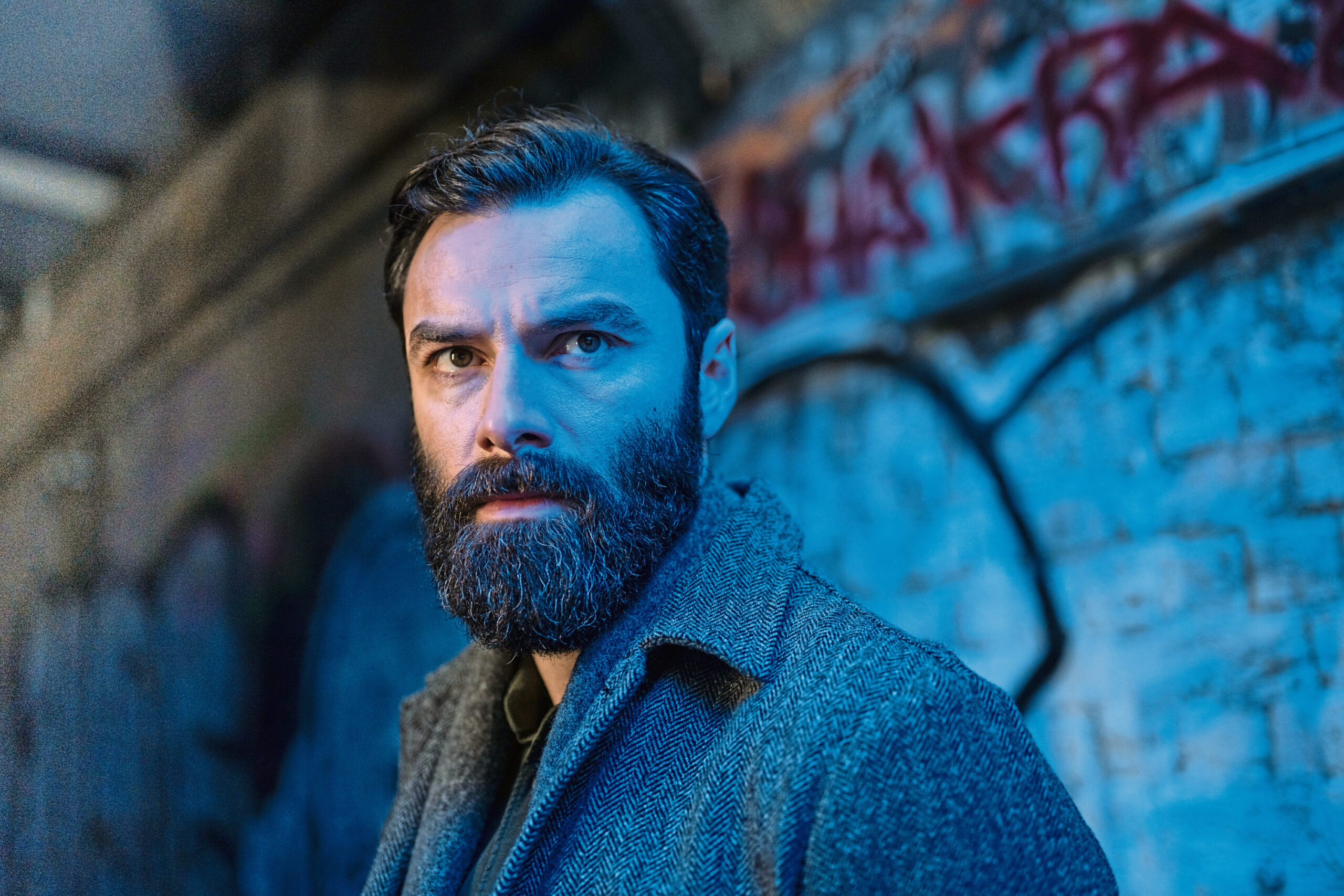
Playing a doctor with early-onset dementia led Poldark star Aidan Turner to do his own research into the condition.
In The Suspect, a new psychological thriller, he plays Dr Joe O’Loughlin who, despite seemingly having a perfect life, has been diagnosed with Parkinson’s as well as being suspected of hiding deeper, darker secrets.
As part of his preparation, Turner met a young musician called Drew Hallam, who was diagnosed with dementia in his 30s.
“We went to a pub to meet for the first time,” said Turner. “After sitting down for an hour or so talking about things, Drew showed me this piece of technology which he moderates with a dial.
“It’s a pulse generator which has been placed under his skin and is connected to fine wires that are inserted into specific areas of his brain. When he moves the dial it slows the movement down and dissipates the tremors. And when he knocks it off the tremors come back.
“Then we started to talk about how I would play the tremors in a scene. It’s like anything, you do as much research as you can, reading, watching videos, speaking with people and so on.
“We wanted to keep the tremor subtle because Joe has been recently diagnosed, but enough for it to read on camera.
“Getting it right was important. Parkinson’s affects different people in different ways. We don’t often see a leading character who has Parkinson’s. So it was interesting to tackle that.”
In The Suspect, Turner’s character saves a suicidal young man by stopping him jumping off a building, a scene which entailed some dizzying stunt work.
“It was quite involved to film,” added Turner. “We had stunt guys on wires on the real building and we built a replica of a couple of the floors on a studio lot. You’re only up about 15 or 20ft. But that was high enough for me. I’m not great with heights and it felt really high and breezy.
“There wasn’t too much acting needed. I was working with an actor called Gabin Kongolo, who played Malcolm. He did a great job.
“Although it was totally safe with no danger involved, I remember thinking, ‘I wouldn’t want to fall from here. I don’t see any crash mats. This isn’t exactly fun.’
“Which was a good feeling in terms of filming the scene. Visually it looks pretty impressive. Quite the introduction to Joe as a character.
“Joe then becomes a bit of a media hero. But we soon begin to struggle with this idea that he is a hero. What that means along with the vulnerability he now feels with his condition.”
The Suspect, tomorrow, ITV, 9pm

Enjoy the convenience of having The Sunday Post delivered as a digital ePaper straight to your smartphone, tablet or computer.
Subscribe for only £5.49 a month and enjoy all the benefits of the printed paper as a digital replica.
Subscribe © SYSTEM
© SYSTEM